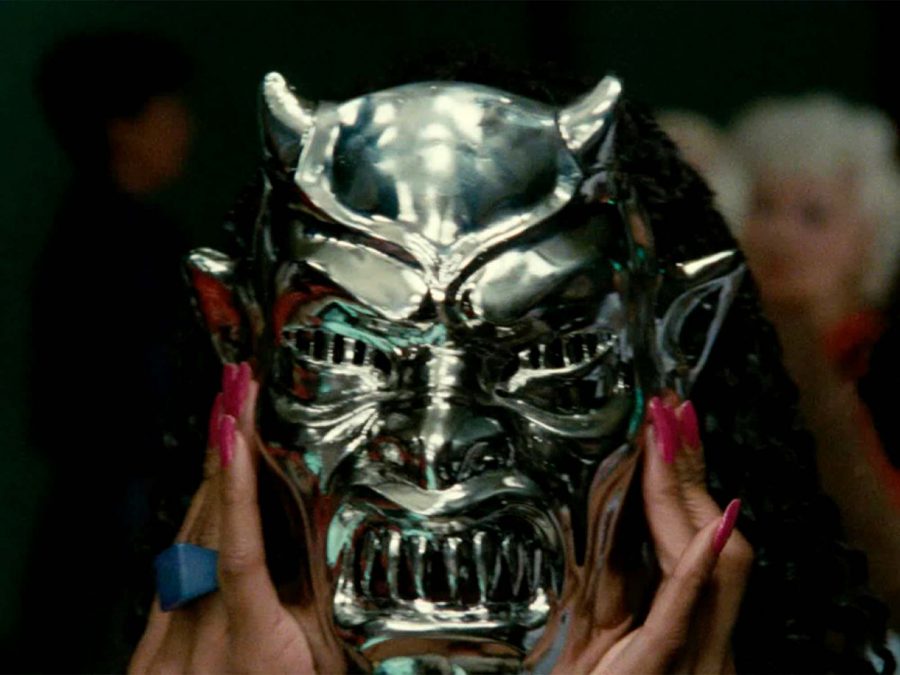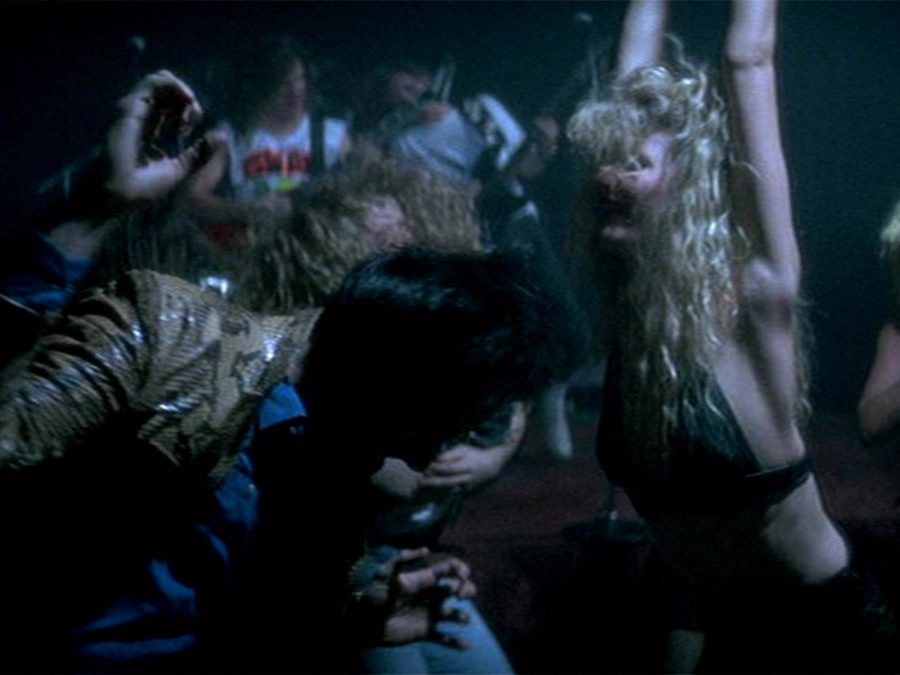Unlike most forms of popular music, heavy metal has a definitive origin story that both fans and scholars can agree on: in the beginning, there was Black Sabbath. Of course, heavy rock had already started to harden in the back half of the 1960s (Cream, Hendrix, Iron Butterfly et al) but Sabbath’s formation in 1968 still stands as metal’s definitive creation myth – a brutal new form of rock ‘n’ roll forged in the fires of England’s industrial North. But there was a problem – they weren’t called Black Sabbath. Not yet anyway.
Initially the Birmingham fourpiece went by Earth – much too hippy-dippy. Stuck for a suitable replacement, inspiration would suddenly strike bassist Geezer Butler when he spotted people queuing for a revival screening of Mario Bava’s 1963 Black Sabbath across the road from a rehearsal room. This newly adopted moniker would push the group’s songwriting in a darker direction – “We wanted to create the vibe you get off horror films,” guitarist Tony Iommi would later say. From its very inception, heavy metal has owed a debt to cinema.
In the 1970s, metal was still in its primordial form, and what had already emerged was either too scandalous or too underground (or both) to be acknowledged in mainstream cinema. Dracula A.D. 1972 and Brian De Palma’s Phantom of the Paradise did both acknowledge an emerging association between rock music and “satanism”, but neither film had an especially heavy soundtrack.
An early example of an inarguably Metal Movie is Stunt Rock, a 1978 grindhouse curio from Ozploitation auteur Brian Trenchard-Smith. The film follows the fictionalised exploits of Australian stuntman Grant Page (playing himself, woodenly) as he arrives in Hollywood for a TV gig. Page’s cousin just so happens to be part of a proto-metal band called Sorcery (who also actually existed), whose live act features two magicians, one dressed as Satan, the other as Merlin, locked in a pyrotechnic wizards’ duel.
___STEADY_PAYWALL___
The familial connection between Page and Sorcery was, of course, a fabrication – it serves as the flimsy connective tissue between the two exploitable elements: stunts and rock (you get a lot of both). It’s a delightfully bone-headed concoction, one that was clearly machine-tooled for teenage headbangers.
As metal edged ever closer to the mainstream, there was a definite upturn in cinematic representation at the outset of the 1980s, though only in disreputable genres. Heavy Metal, a 1981 adult animation anthology film based on a popular comic of the same name features barbarians, breasts and bloodshed across several shabbily animated vignettes. The star-studded soundtrack album boasts Black Sabbath, Sammy Hagar, Blue Öyster Cult and, bizarrely, DEVO. Heavy metal and horror’s reciprocal relationship also continued – while countless metal bands were drawing lyrical inspiration from slashers and shockers, Freddy Krueger was rocking out to Dokken’s movie tie-in hit Dream Warriors on MTV.

When it came to pairing heavy metal and horror, Italy was leading the way. Lamberto Bava (son of Mario) made pulse-pounding use of Saxon and Accept’s lightning fast licks in his deliriously silly 1985 film Demons, and as Dario Argento’s work became leaner and meaner in the 1980s, he too began shifting his sonic palette from prog rock to metal.
Argento’s first implantation of the genre, in 1985’s Phenomena, is slightly clumsy – Iron Maiden’s rollicking Flash of the Blade (a song about fencing) is an incongruous choice for Jennifer Connelly wandering around a spooky boarding school – but it showed some promise. His follow-up, Opera, delivers on that promise. Here Argento soundtracks arguably his most brutal murder sequences with speedy, sleazy metal cuts that heighten the film’s sense of perverse cruelty – wilfully ugly music for wilfully ugly images. A match made in Hell.
As the ‘Satanic Panic’ began gripping Reagan’s America and elsewhere in the mid-1980s, reactionary fearmongering around the rapidly expanding metal subculture flourished. Perhaps in response to this growing cultural anxiety, metal became the subject of ridicule in big-screen comedies, most famously in pioneering 1984 mockumentary This is Spinal Tap – a mean-spirited film whose commentary on the genre amounts to little more than ‘stupid music made by stupid people, for stupid people’.
Comedies with a focus on metal fans – Bill & Ted’s Excellent Adventure, Wayne’s World – were perhaps more affectionate, but no less patronising. By the 1990s metal was such a part of the Hollywood comedy lexicon that an act as extreme as Cannibal Corpse could appear in a film as silly as Ace Ventura: Pet Detective.
It must have been surprising then to see David Lynch tapping into the power of metal in 1990 with Wild at Heart, which follows two rockabilly lovers on the run who are also, crucially, metalheads. At the film’s outset, we see Sailor (Nicolas Cage) and Lula (Laura Dern) attend a strobe-lit thrash metal concert, lost in headbanging euphoria. Sailor then informs the band (Powermad, little-remembered but very good) that they “have the same power E had” before joining them on stage to sing an impromptu, and completely improbable, rendition of Elvis Presley’s ‘Love Me’. In this moment of magic realism, Lynch reaffirms metal’s lineage with earlier forms of rock ‘n’ roll, weaving it seamlessly into his tapestry of off-kilter Americana.

Lynch’s thoughtful implementation of metal in Wild at Heart and Lost Highway surely helped to make the genre a more permissible choice for arthouse films in the 1990s and beyond. Harmony Korine’s 1997 debut feature Gummo is deeply entrenched in metal culture, soundtracking its hyperreal vision of rural American rot with a potent mixture of doom, black and death metal, as well as dressing its procession of geek show characters in Dio and Krokus tees. Olivier Assayas used Norwegian black metal to chilling effect in his 2002 thriller Demonlover, and the bad vibes of Sunn O))) underscored Jim Jarmusch’s 2009 Limits of Control.
At the dawn of the new millennium, rockstar-turned-filmmaker Rob Zombie cemented himself as the preeminent heavy metal auteur, importing the sensibility he had honed in his music and music videos – hot-rods, monsters, scantily-clad ladies – to the big screen in films such as 2005’s The Devil’s Rejects and 2012’s The Lords of Salem, though his work is typically more metal in affect than in sonic texture or subject matter.
Panos Cosmatos’ lysergic 2018 indie hit Mandy told the affecting, albeit brutal, story of a metalhead (Andrea Riseborough) and a lumberjack (Nicolas Cage again) whose Eden-like existence is destroyed by a vengeful Christian cult – the film’s 1980s setting makes its evocation of the ‘Satanic Panic’ unmistakable. Cosmatos himself is a dyed-in-the-wool metal fan and Mandy’s gatefold LP aesthetic betrays a lifelong love affair with the genre and its subculture.
Metal has much to offer a filmmaker. It has scale, drama, vivid imagery – it’s innately cinematic. However, it’s still rare to see filmmakers go all in on metal, to take it seriously. Even recent films targeted at heavy metal fans such as 2018’s Heavy Trip and last year’s Metal Lords are often, ironically, rather lightweight. Jonas Åkerlund’s Lords of Chaos from 2018 and Darius Marder’s 2019 debut feature Sound of Metal both tackled the subculture to varying degrees of critical success, but perhaps only by taking a dim view of the music and its consequences.
Metalheads – and indeed cinephiles – deserve better. Still, a handful of great directors have seen metal’s cinematic potential, embraced its extremity and emerged with something powerful. Filmmakers like Lynch, Korine and Cosmatos all understood something fundamental about this music: it does not deafen its fans, it moves them. Hail Satan!
The post The complicated legacy of heavy metal in cinema appeared first on Little White Lies.


0 Comments